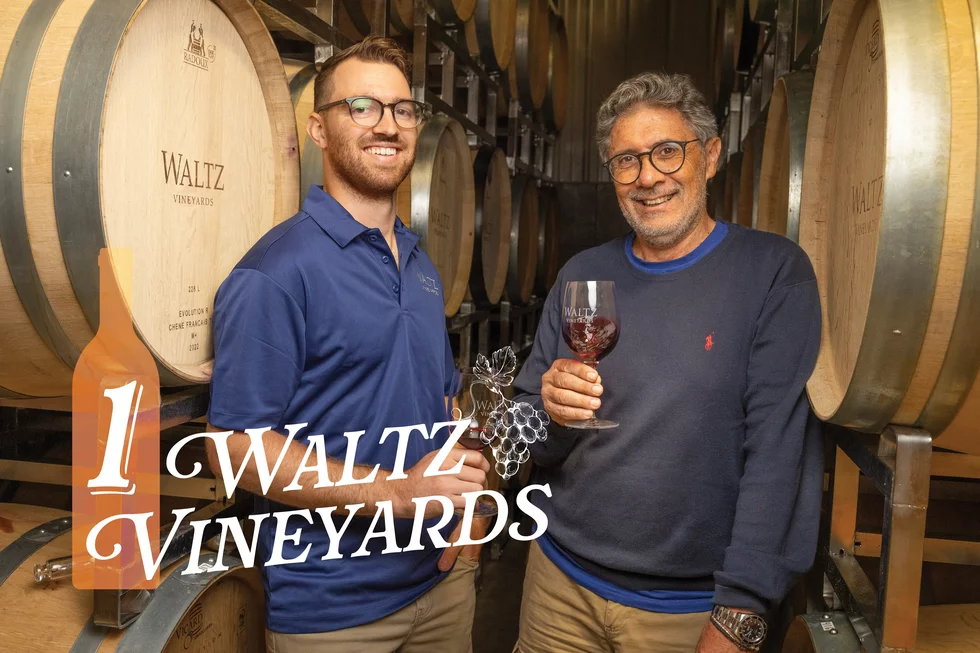The Grape Escape: Fall Wine Tour
Amongst the corn, tobacco, and soy fields that line the roads in Central Pennsylvania lie a number of small, family-run wineries just waiting to show off their distinctive wine styles. The fresh air of autumn offers a beautiful opportunity to visit these vineyards and taste wine grown in the unique terroir of Pennsylvania. It’s a colorful, romantic time to taste, learn, and understand how grapes become an alluring beverage. Wondering where to start? Here’s some information on local wineries to visit, as well as a little “Wine Tasting 101” to get you motivated this fall.
Tasting wines starts with the first sense we use when we open our eyes in the morning—our sight. Look at the color of the wine. Is the wine red, white, orange, or pink? Is the wine clear or opaque, sparkling or still? This can tell you information about the wine such as the probable grape variety or if there was secondary fermentation, the “traditional method” used to make champagne and other quality sparkling wines.
Next, place your nose in the glass and gently start to smell the four corners of it. There are two types of smells, aromas and bouquets. The primary aromas you smell will give you a clue about the variety of grapes that were used in making the wine. For example, the merlot grape variety offers fruit characteristics such as plum, black cherry, and red currants. Floral and herbal aromas will also offer clues about grape variety. For example, in addition to red currant fruit aromas, the cabernet sauvignon variety offers mint, eucalyptus, and violet aromas. Aromas such as yeast, spice, or nuts are considered secondary or tertiary, derived from fermentation and aging. These aromas are called the bouquet and can smell like butter, mushroom, sourdough, brewer’s yeast, or aged cheese, reflective of the fermentation process. Aromas such as brioche, caramelized sugar, or baking spices are often smelled as the result of oak aging.
Take a sip of the wine, and swirl the liquid around your mouth, swishing it like mouthwash. The taste of a wine appears as sweet, salty, bitter, or sour in your mouth. Mouthfeel focuses on the overall texture you feel from the wine. This could feel like the difference between skim milk and cream, which is called the weight, or a drying sensation that indicates the presence of tannins—the same sense you get when you drink down to the teabag in a cup of tea. Mouthfeel could also present itself in an angular sense, like a ping-pong ball bouncing from each side of your mouth, reflecting acidity in the wine.
Finally, assess the overall flavor of the wine. Flavor is the combination of aroma, bouquet, taste, and mouthfeel. It’s the overall impression that you get about the wine. Keep in mind, you are the only one who can tell you if you enjoy a wine. No one else can tell. Your palate is unique, special, and correct for you.
For a fun way to experience wine flavors and enjoy the fall, you don’t need to look further than your home state. Check out the local wineries that offer amazing fall wine tasting opportunities

Manhiem, PA
Waltz Vineyards is owned and operated by Jan Waltz, a sixth-generation Lancaster County farmer, and his wife, Kimberly, with the intent of producing world-class wines. They grow 34 acres of only Vitis vinifera in the Lancaster Valley AVA, both in the valley itself and on the Lancaster valley bench, 620 feet above sea level.
Waltz’s focus is on estate wines—grown and bottled on the property—that are made with purpose and based on varietal character, the expression of terroir, and having a sense of place. Their goal is to change people’s minds about Pennsylvania wines, and vinifera being not only grown but also having the capacity to fully ripen and make world-class wines in the Keystone State. Their desire is for consumers to be able to taste their wines and know they are from Waltz Vineyards. Waltz has such high standards that if it rains too much, as it did in 2018, and the grapes don’t ripen or get waterlogged, they won’t make the wine. This is the same mentality as in Champagne!
With three tasting rooms in the area, you can visit any of them to enjoy a European sensibility. Enjoy local artwork and artisan cheeses, crackers, and chocolates while you sip estate wines in the tasting room or on the picturesque lawn overlooking the vineyards and rolling hills at the Manheim winery. Or visit their beautiful tasting bar, secluded loft, or outdoor patio at the Kitchen Kettle Tasting Room in Gordonville, or the Waltz Wine Room at the Market at the Wilbur in Lititz.
Hours vary at each location. Call to make reservations.
For the full article, please visit Susquehanna Style.